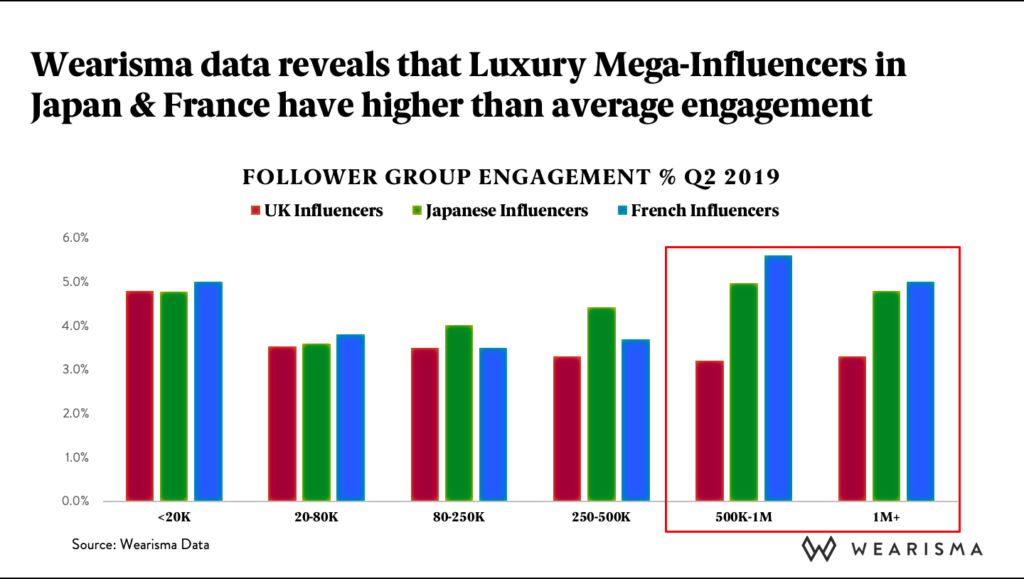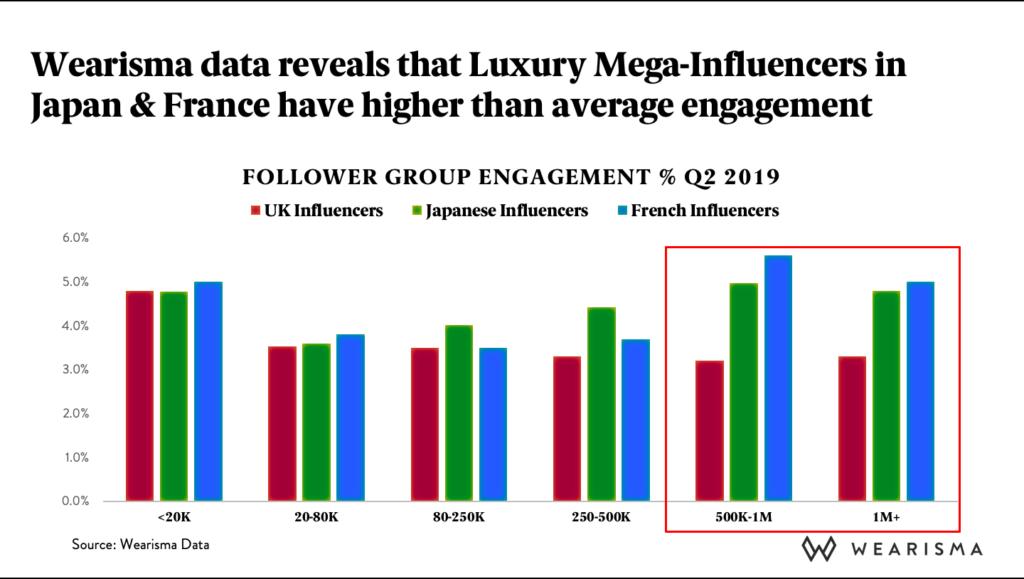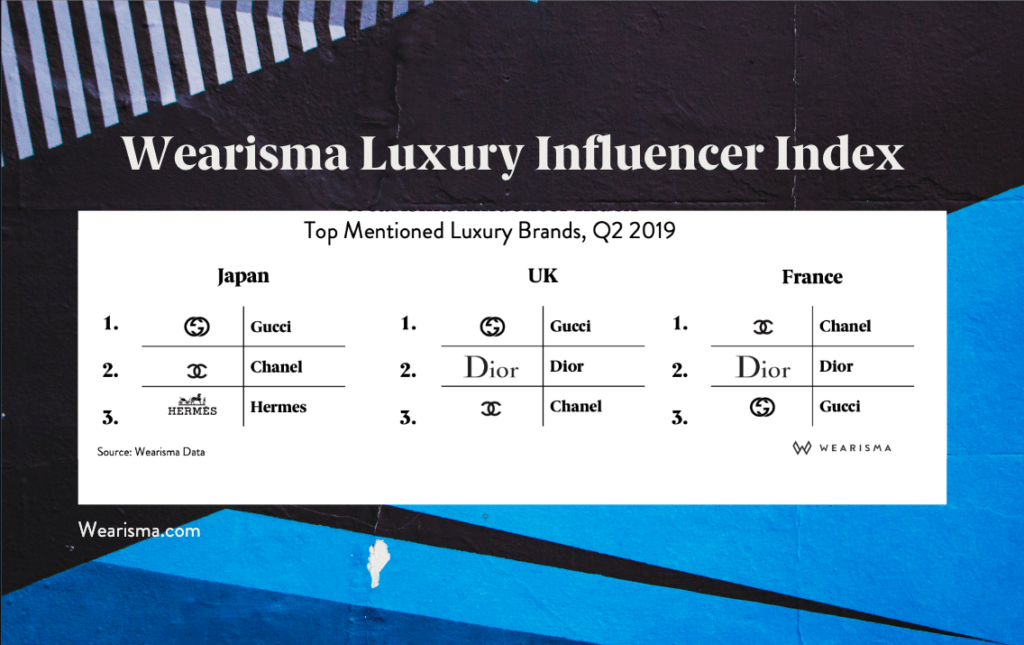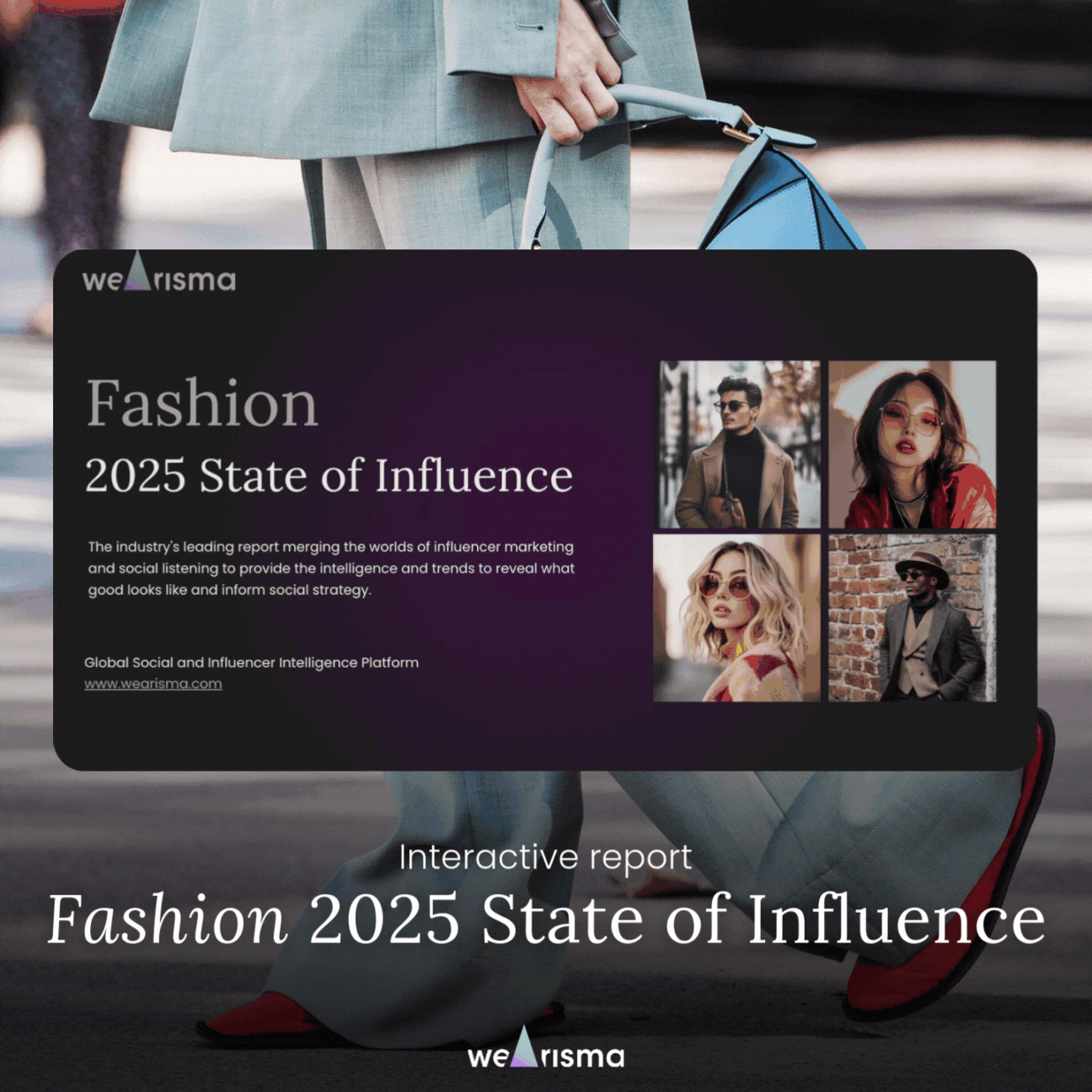Wearisma’s latest analysis explores how brands can tailor their influencer marketing strategies to different markets, revealing top luxury brands and their approaches in Japan, France, and the UK. Discover five key tips for adapting global strategies and learn about the most mentioned luxury brands in each country.

Published On: July 24, 2019
In our latest post, Wearisma’s analysis into the state of Influencer Marketing in Japan and Europe answers the pivotal question: ‘Can a brand simply copy and paste an Influencer Marketing strategy from one country to the next?’
To highlight the differences in Influencer Marketing across different markets, Wearisma has conducted a deep dive into the Influencer landscape in 3 countries: Japan, UK and France.
Read our latest blog post to read our 5 tips revealing why brands should use intelligent data to help them successfully adapt their global Influencer Marketing strategy.


1. Gucci
Responded to the growing interest for virtual Influencers in Japan by including one (‘Erica’) in their campaign.
2. Chanel
Utilised ‘Late Millennial’ Influencers, one of Wearisma’s ‘Ones to Watch’ for their #takeyourchance campaign event. Older Japanese people are joining major social networks at higher rates.
3. Hermès
Encouraged the creation of organic content by Japanese Influencers by creating Avec Elle, a non-exclusive ‘instagrammable’ experience housed in Tokyo’s National Art Center.
1. Chanel
Encourages “medium and long-term collaborations with local influencers who like the brand, identify with it and represent its values.”
2. Dior
Created large-scale Influencer campaigns. “If you want to be heard, you have to shout very loud.” – Pietro Beccari
3. Gucci
Embraced French artistic Influencers to create brand equity. Gucci’s Instagram campaign with French artists to promote the Gucci Bloom Fragrance performed well with French audiences.
1. Gucci
Focused on entry-level “Traffic Building” products such as small-leather goods and eyewear to create an influx of aspirational consumers
2. Dior
Maintained high standards in their large-scale campaigns by working with a variety of British Stylists/Influencers for their #Dior30Montaigne campaign
3. Chanel
Utilised British ‘Industry Insider’ Influencers (Influencers that hold professional positions within various industries) for their #chanelgrasse campaign. Industry Insiders are one of Wearisma’s ‘One’s to Watch’
Wearisma has collaborated with Walpole to bring you a British Luxury influencer exclusive.
In Q2 2019, out of the three countries analysed, Wearisma data reveals that Burberry was the most mentioned British luxury brand in the UK and France and second to Stella McCartney in Japan.
Notably, Burberry has achieved this position due to the diverse set of influencers that they work with. For example, to celebrate Burberry’s recent launch in Mykonos, they collaborated with American designer Sami Miro (@samimiro), Italian model Erika Boldrin (@erika_boldrin) and Emaradi Dana Hourani (@danahourani) among others. Working with a diverse set of influencers enables brands to connect to diverse audiences spanning different regions in an authentic way.
Keep informed with the latest trends, reports, and case studies from the world of influencer marketing.

Influencer marketing has transformed significantly in recent years, expanding beyond simply identifying social media personalities with substantial followings. Today’s successful campaigns require sophisticated systems that address the entire marketing process, from strategic creator selection through content development to comprehensive performance analysis.

WeArisma’s Fashion 2025 State of Influence Interactive Report – Your Essential Guide to Beauty Brand Success in the Digital Age.
The fashion landscape is evolving. Traditional strategies no longer guarantee success – Resonance, Virality, and Authentic Engagement are beginning to define market leaders.
Our latest Fashion 2025 State of Influence Report uncovers the key shifts shaping the industry and the strategies fueling sustained impact.
Stay up to date with the latest industry trends and topics
Discover how WeArisma can help you harness the power in influence, grow your brand’s presence, and achieve measurable success.
WeArisma combines the power of AI, influencer marketing and social listening to deliver smarter, scalable strategies with real impact.